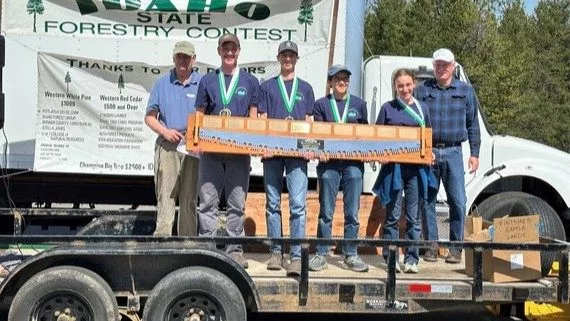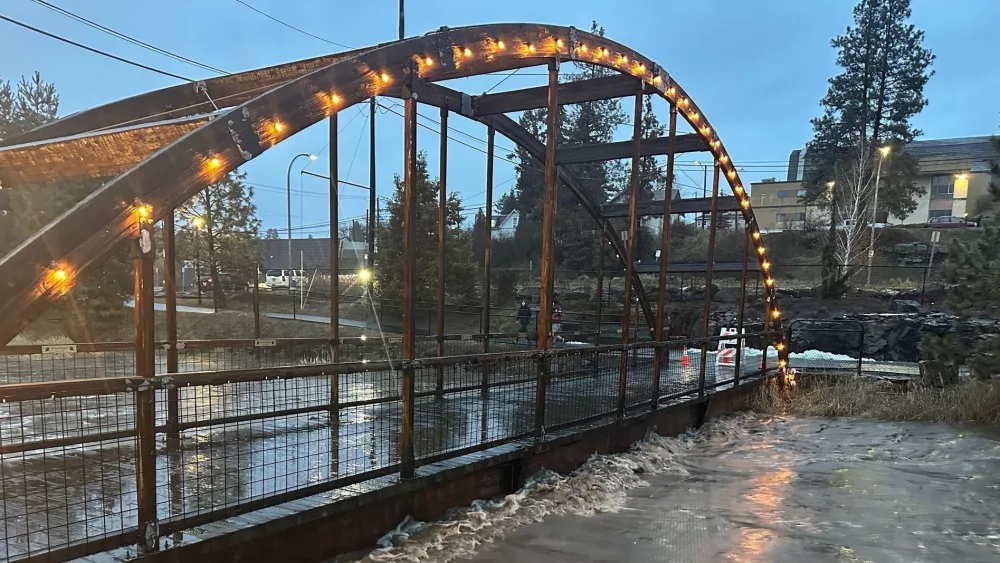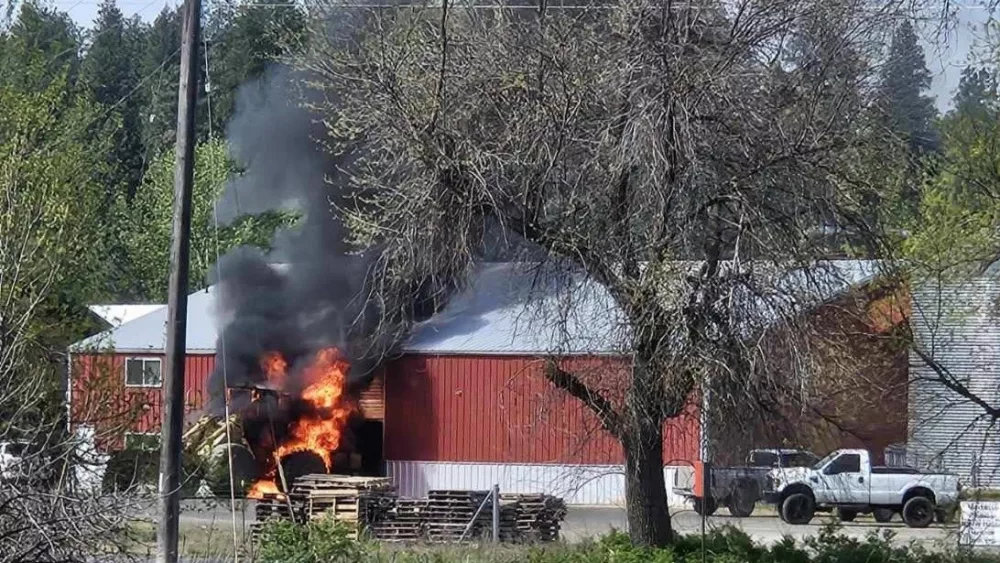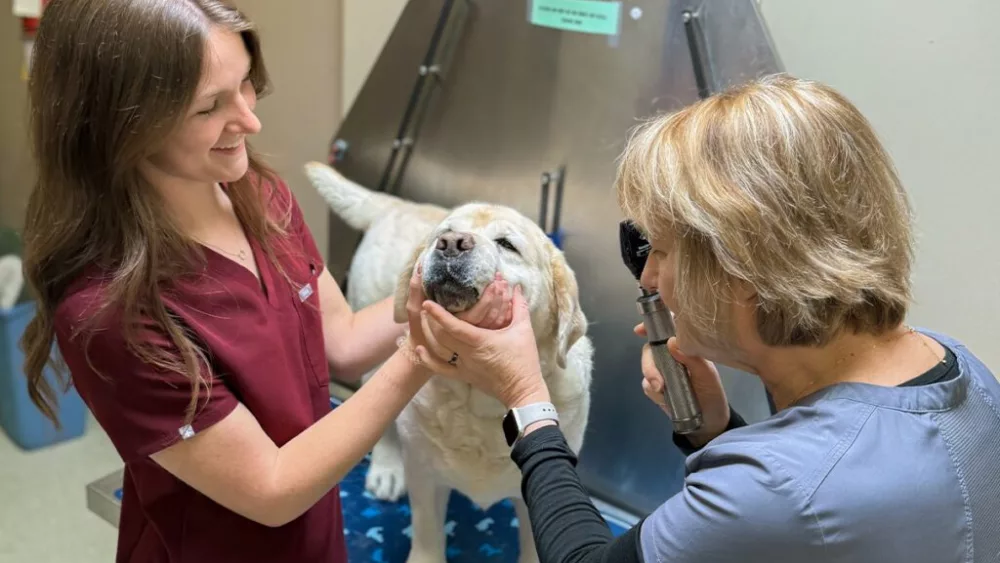Pullman, WA.- Farmers are known for their mend-and-make-do spirit, and Daniel Moore is no exception.
So when his young grandson needed a specialized walker, Moore got to work.
JP, who’s 7, has a rare genetic disorder that makes standing difficult. Moore found some old crutches his brother-in-law had used in high school, sawed them off and mounted them onto JP’s child-sized walker.
“When his arms were supported, all of a sudden he started taking off with that thing,” recalled Moore, a wheat farmer in Dusty, Washington, who graduated with bachelor’s and master’s degrees in agricultural economics from Washington State University.
Now a design team of mechanical engineering students at WSU is creating a prototype of what Moore calls “Wally the Walker.” Another student team in computer science is creating an app that can interact with the walker and help a user communicate their needs.
Moore’s ingenuity found a home in those WSU classes through a collaborative partnership with the university’s Center for Civic Engagement (CCE). The service-learning center acts as a bridge between the needs of nonprofits and agencies serving the public good, and faculty and students who want to help, said Jessica Perone, CCE’s faculty consultant.
“A lot of times our students are filling immediate gaps in technology or PR needs, sometimes it’s just a need for human capital, or volunteers,” Perone said. Service learning has been linked to student success by helping students develop a sense of connection to one another and the larger community, she said.
CCE works with faculty from the Pullman, Vancouver, Tri-Cities and Global campuses to incorporate service learning into their courses. Some 3,000 to 6,000 WSU students take part each year, involving 80 to 100 college courses across the WSU system.
The WSU classes got involved with Moore’s walker project via the Colfax Council on Aging and Human Services, where Moore sits on the board. That agency and its director, Paige Collins, have partnered with CCE for many years.
Both projects should be finished by the end of the semester. The walker prototype will be donated to Whitman Hospital, and physical therapists there have been working with the class to hone the design, said Emily Larsen, assistant professor in the School of Mechanical and Materials Engineering who is leading the capstone project.
“The limitations of current walkers are that they are expensive and not adjustable, so not comfortable for patients,” Larsen said. “The therapists have been able to point out flaws with existing walkers so the design team knows what has to be improved.”
The app has been in development throughout the academic year, said Ananth Jillepalli, assistant professor in the School of Electrical Engineering and Computer Science. It works with embedded sensors in the walker and provides feedback to the person using it.
Student Koji Natsuhara, who has been on the app design team throughout, said, “There’s always satisfaction in fulfilling a project that has an actual need.”
Once these capstone projects are finished, they might be further developed by students, clients, or by another service-learning class supported through CCE, Perone said.
Moore said JP’s mobility has improved enough that he no longer needs the original walker. But it was a game-changer for the child when Moore first developed it, helping JP participate in school and social activities.
Said Moore, “Necessity is the mother of invention. Here’s a grandpa, whose heartstrings are getting tugged by a grandson who is struggling, thinking, ‘What can we do to make him go farther than everyone imagined?’”
He added, “The end goal for me is to help at least one person with the creation of that walker at WSU.”
So when his young grandson needed a specialized walker, Moore got to work.
JP, who’s 7, has a rare genetic disorder that makes standing difficult. Moore found some old crutches his brother-in-law had used in high school, sawed them off and mounted them onto JP’s child-sized walker.
“When his arms were supported, all of a sudden he started taking off with that thing,” recalled Moore, a wheat farmer in Dusty, Washington, who graduated with bachelor’s and master’s degrees in agricultural economics from Washington State University.
Now a design team of mechanical engineering students at WSU is creating a prototype of what Moore calls “Wally the Walker.” Another student team in computer science is creating an app that can interact with the walker and help a user communicate their needs.
Moore’s ingenuity found a home in those WSU classes through a collaborative partnership with the university’s Center for Civic Engagement (CCE). The service-learning center acts as a bridge between the needs of nonprofits and agencies serving the public good, and faculty and students who want to help, said Jessica Perone, CCE’s faculty consultant.
“A lot of times our students are filling immediate gaps in technology or PR needs, sometimes it’s just a need for human capital, or volunteers,” Perone said. Service learning has been linked to student success by helping students develop a sense of connection to one another and the larger community, she said.
CCE works with faculty from the Pullman, Vancouver, Tri-Cities and Global campuses to incorporate service learning into their courses. Some 3,000 to 6,000 WSU students take part each year, involving 80 to 100 college courses across the WSU system.
The WSU classes got involved with Moore’s walker project via the Colfax Council on Aging and Human Services, where Moore sits on the board. That agency and its director, Paige Collins, have partnered with CCE for many years.
Both projects should be finished by the end of the semester. The walker prototype will be donated to Whitman Hospital, and physical therapists there have been working with the class to hone the design, said Emily Larsen, assistant professor in the School of Mechanical and Materials Engineering who is leading the capstone project.
“The limitations of current walkers are that they are expensive and not adjustable, so not comfortable for patients,” Larsen said. “The therapists have been able to point out flaws with existing walkers so the design team knows what has to be improved.”
The app has been in development throughout the academic year, said Ananth Jillepalli, assistant professor in the School of Electrical Engineering and Computer Science. It works with embedded sensors in the walker and provides feedback to the person using it.
Student Koji Natsuhara, who has been on the app design team throughout, said, “There’s always satisfaction in fulfilling a project that has an actual need.”
Once these capstone projects are finished, they might be further developed by students, clients, or by another service-learning class supported through CCE, Perone said.
Moore said JP’s mobility has improved enough that he no longer needs the original walker. But it was a game-changer for the child when Moore first developed it, helping JP participate in school and social activities.
Said Moore, “Necessity is the mother of invention. Here’s a grandpa, whose heartstrings are getting tugged by a grandson who is struggling, thinking, ‘What can we do to make him go farther than everyone imagined?’”
He added, “The end goal for me is to help at least one person with the creation of that walker at WSU.”




